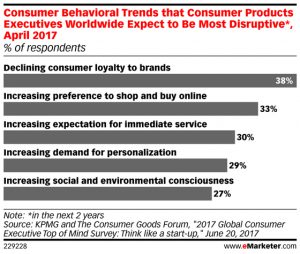Ever wonder how to get more people talking about your business? It’s simple.
Offer them incredible products and services that solve their problems and fulfil their needs and desires. Then when you have converted them into customers, continue to keep them satisfied and give them something to talk about by surprising them too.
Sounds easy, doesn’t it? But as you know it’s not. I realise that only too well in my own service offerings. Which is why I decided to write this article about the 7 key elements that will get people talking about us!
Every strategy comes with its own set of rules, and the same is true for word-of-mouth marketing (WOMM). Yes, this means that you can actually create a strategy to generate positive word-of-mouth for your business. In fact, this has become an essential part of marketing as people have started to lose trust in the reviews they read online – more on that later. Friends, family and trusted advisors are those they turn to for a valued opinion these days.
But first: why does Word-of-Mouth matter?
To start with, it is important to understand what cognitive dissonance is. According to Wikipedia’s definition, it occurs when
“a person holds two or more contradictory beliefs, ideas, or values; or participates in an action that goes against one of these three, and experiences psychological stress because of that. Coping with the nuances of contradictory ideas or experiences is mentally stressful. It requires energy and effort to sit with those seemingly opposite things that all seem true.”
In other words, people are always searching for ways to reduce their stress that is caused by cognitive dissonance when shopping and selecting brands. One of the ways they do this is by searching for confirmation that they have made the right choices. Receiving positive word-of-mouth opinions of products and services from friends or family members will reduce the dissonance, as it confirms people’s beliefs in what they have purchased.
Given that consumers need input to reduce the risks they take, especially when purchasing a brand for the first time, it is marketing’s job to provide a maximum amount of information to build trust. Whether this is through advertising or online customer reviews, it is important to show both transparency and popularity to enhance confidence.
This has become a challenge in recent years as a result of the exposure of significant fake reviews on many websites, including Amazon. There are now even services to highlight these paid or fake reviews, such as fakespot.com and reviewmeta.com. If you are interested in this topic, then I suggest the article on “10 secrets to uncovering which online reviews are fake.” by Catey Hill.
So how can we improve customers’ trust in what we offer? Here are seven ideas I came up with to include in your word-of-mouth marketing:
#1 Make Customers Delighted!
If you value your customers, offer them more than they expect! It’s not only the great product or service that generates loyalty … Click to continue reading


 The first “P” stands for people and often this is taken to be “Do you know to whom you are selling?” The answer is always yes and that’s accepted as sufficient.
The first “P” stands for people and often this is taken to be “Do you know to whom you are selling?” The answer is always yes and that’s accepted as sufficient.



 Target announced last October its plans to introduce the “
Target announced last October its plans to introduce the “ Tesco recently introduced their “
Tesco recently introduced their “ Sainsbury’s has now retaliated with the launch of a new campaign with the title “
Sainsbury’s has now retaliated with the launch of a new campaign with the title “









